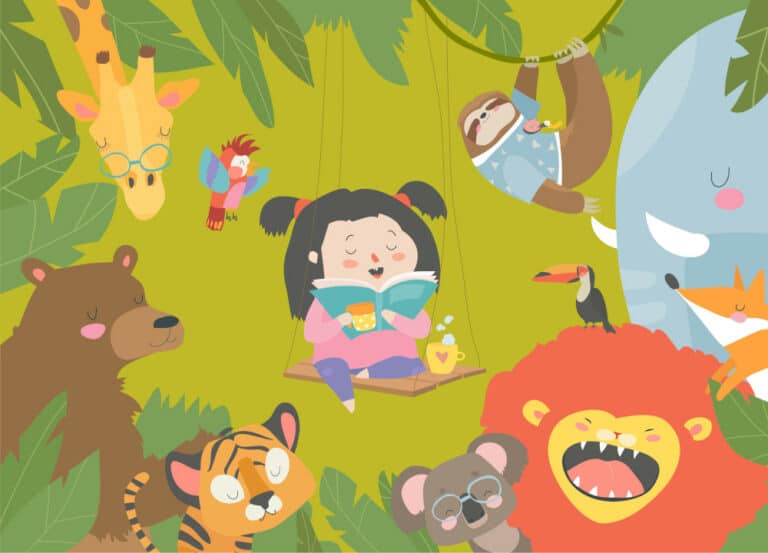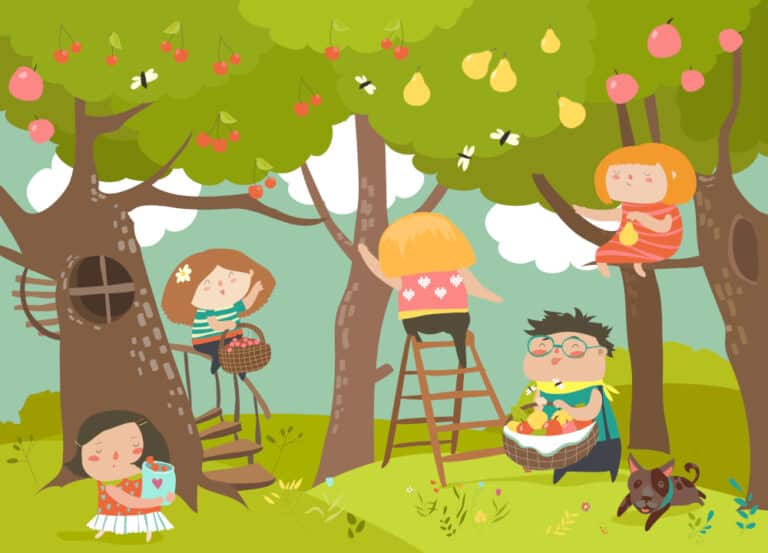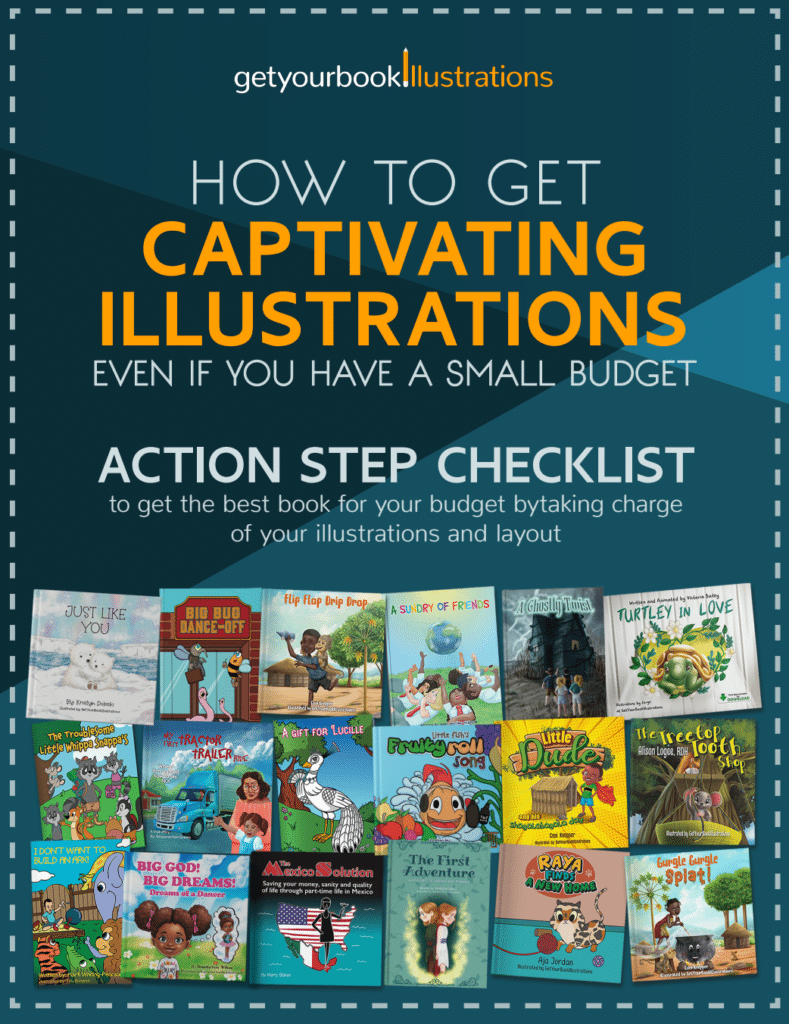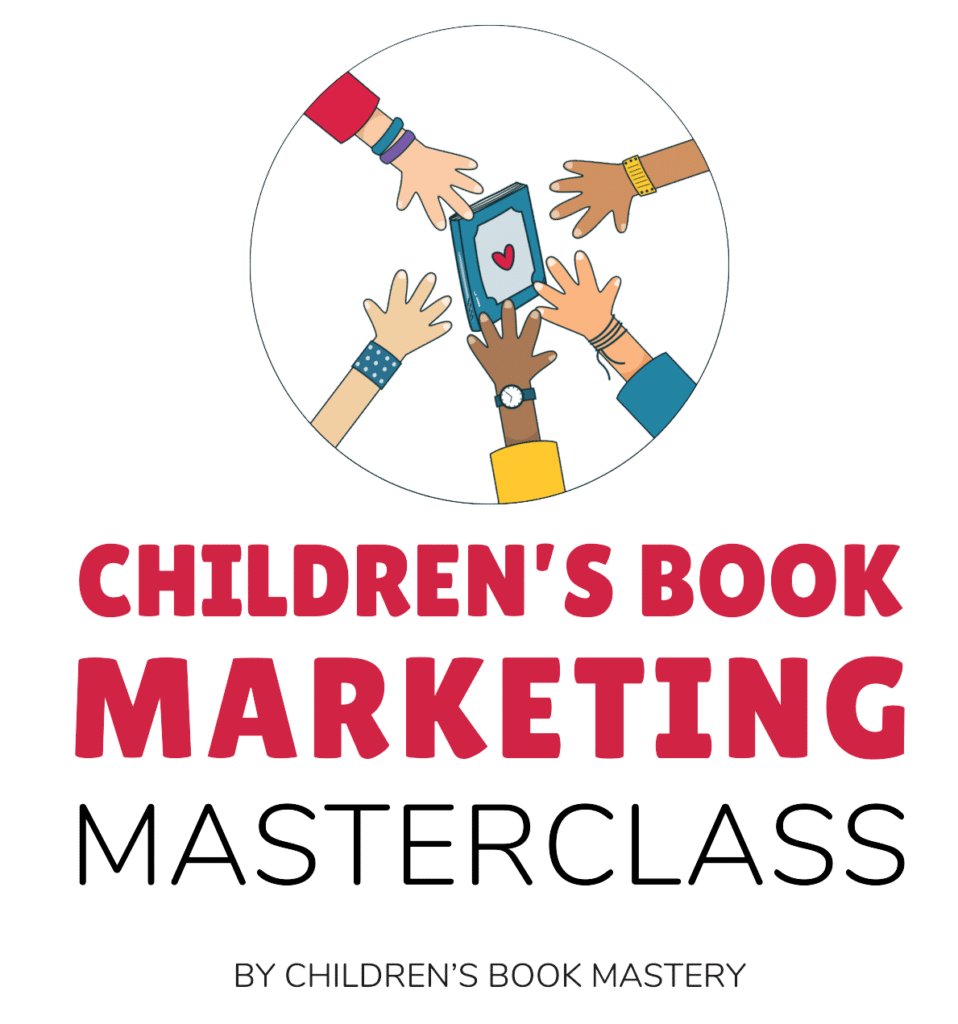How to Come Up With And Refine Great Children’s Book Ideas
Children’s books offer a colourful array of stories, characters, and themes and play a pivotal role in helping children make sense of the world. However, as writers, parents, or educators, no matter how many books you’ve read, writing your own seem quite daunting, starting with coming up with great children’s book ideas that will appeal to kids.
Most authors I work with want to write because they have an idea. Of course, sometimes it starts simply with the desire to write a children’s book, but I find most often it’s an idea that just “has to become a book” that starts their journey. But many aspiring authors also worry if their idea will work for a book, or if it will sell. Some aspiring authors, on the other hand, don’t inspect their idea with a critical enough eye, and miss the opportunity to take it from mediocre to fabulous because they never develop their idea.
What many authors don’t realise is they can usually improve their ideas, setting them up to write a stronger book.
This blog post aims to inspire and guide you, offering ways to come up and refine your children’s book ideas so that your children’s book will captivate children.
When it comes to how to come up with and refine your children’s book idea, we’ll cover:
- market research for developing children’s book ideas.
- factors to consider when brainstorming.
- ways to come up with children’s book ideas.
- factors to consider when brainstorming and choosing an idea.
- examples of different and popular children’s books.
- strategies to supercharge your children’s book ideas.
- the extra benefit of coming up with many children’s book ideas.
Let’s get into it!
Market Research for Developing Children’s Book Ideas
When it comes to developing children’s book theme ideas, market research can be a valuable tool. Researching current trends in the children’s book market can help to identify areas where there is a need for new stories, plus you’ll see which kinds of books perform well. It can be very helpful to keep up with the latest children’s reading habits in order to ensure that your book is both engaging and relevant.
Knowing what other authors and publishers are doing in the market can be beneficial to ensure your book stands out from the crowd. Consider the current trends, top-selling titles, preferred themes, and bestselling authors in the category you want to write in.
Frequent visits to online bookstores, such as Amazon and Waterstones to evaluate popular authors and book types can provide useful insight. Also engaging with children’s librarians, booksellers, teachers, and parents can provide firsthand information about children’s preferences. By incorporating this market research into your book idea, you are more likely to create a standout children’s book that not only entertains but also educates and inspires the young readers.
Market research is also great for helping you come up with children’s book title ideas because you can see what’s out there and selling well.

Amazon’s bestselling children’s books about rabbits.
Factors To Consider When Brainstorming Children’s Book Ideas
When it comes to writing a children’s book, there are a few factors to take into account.
The factors to consider when brainstorming your children’s book ideas are:
- that you have the right idea for the right age group.
- knowing your book’s category
- your children’s book characters
You should consider these factors right from the start, because once you’ve started writing, it can be a challenge back if you missed the mark on these. Knowing a bit about the children’s book industry from the start is very helpful.
The right idea for the right age group

Amazon’s children’s book age groups.
Firstly, it is important to think about the age range of your intended readers. This will help you decide which topics and characters you want to put in the book. After this, you can decide on the format of the book, for instance a picture book, an early reader, a chapter book or a middle grade or YA novel.
With children’s books, they must be age appropriate, so make sure that the content is relevant to the age group. For younger kids, generally simpler topics are best, or more complex topics will need to be explored in a simpler way. For older children, the content can explore more complex topics and perspectives and can help them to develop their critical thinking skills.
The challenge often lies in identifying what age group your idea is best suited to, including the type of book it would be best for. For instance, a picture book has about 500 words. While your idea may be perfect for 5–8-year-olds, you may need a few thousand words to tell your story. In that case, your idea would be better suited to a chapter book.
Relevance of your book’s content to the intended age group lays a pivotal role in its success, so it is important to take into consideration the interests of the intended readers. It’s a good idea to You’ll need to look (again) what books are currently popular for your age group, and even the language and illustration styles they like. Parents usually look for books that are similar to the books their kids already love, so knowing that your book will appeal to your age group can help your success in the long run.
Knowing your book’s category
It is a helpful exercise to think about your book’s category before even starting on the first draft. This way, you know where your book will fit into the world (or bookshelf) once it’s done. Having your book in the right category will also help potential readers find your book, so knowing your category can help you get clear on who you are writing for as well.
You can simply consider the broad category or categories here, like fiction vs nonfiction, and then which type of fiction or nonfiction, e.g. fantasy, humorous or self-development. This step shouldn’t box you in, but help you to have more direction and clarity as you develop your children’s book idea.
Your children’s book characters
Once you’ve figured out the age group, type of book and category of your book, you can brainstorm ideas for characters, plot, and setting. You need to know who you are writing for before deciding on your characters, since the age group you’re writing for will affect the kinds of characters your story can have. For instance, having animals as the main characters are common in books for younger children, but not common in YA novels.
Also, when it comes to characters, your main character(s) should be close in age to your readers. Readers prefer main characters who are just slightly older.
Coming up with characters, plot and setting is part of coming up with ideas and arguably one of the most fun parts of writing a children’s book! During this stage, you can get creative with the characters, plot and setting. You can even decide to add some unusual details to any of these.
In creating your characters, give them characteristics that makes them one of a kind. Think about their likes, dislikes, fears, favourite things to do, and so on, and how that shapes them as a character and may feature in the story. Also consider how the character might grow and evolve throughout the story. Will they learn any lessons along the way or experience any hardships?
Your characters must be relatable to your readers. If your readers can’t connect with them and understand why they make certain decisions, they will start to feel disconnected from the character and your story. A relatable, memorable character is crucial in writing a successful book!
__________________
Considering the age range, topics, type of book, and characters, is an essential part of coming up with a good idea for your children’s book.
Ways to come up with children’s book ideas
Start with the basics: brainstorm topics that you are passionate or knowledgeable about. Think of topics or stories that you would have found exciting as a child. You can also look for inspiration from other books, life experiences, and your own imagination.
Below are some ways to come up with plotline or story ideas, as well as ways to come up with children’s book theme ideas.
Life
The first great place to get children’s book ideas is to observe and listen to kids. What’s real to them in their life, or what do they deal with day to day? Which flights of fancy do they come up with? What do they find fun or funny or exciting? A holiday can also be a great theme for your book. Kids love Halloween and Christmas and these can make for great children’s book themes.
Consider the feelings that children experience in their everyday life. Look for ideas by exploring children’s interests, like animals, science, sports, etc. You can also consider topics that are important to children, like family, friendship, and self-discovery.
Being around kids often may be more than enough for you to come up with ideas. Just listen to what they say and look at what they do.

If not, there are many other ways to come up with ideas. Think of what your purpose is for writing the book. Do you just want to teach children about a moral or how to overcome a certain challenge in life? Or write a book that makes them laugh? Do you want to create something beautiful and inspire readers?
It’s easier to write about something that you’re passionate about, or that you enjoy. What do you enjoy doing, or what are your hobbies? If you love painting, that can be something fun to bring into a book, and there are different and interesting ways to do that. I’m not referring to nonfiction in this context, like a book about how to paint. For fiction, maybe your protagonist loves to paint, or they get pulled into one of their paintings and an adventure.
Idea Generators
You can use a book idea generator to help you come up with ideas for a story or children’s book theme ideas. Google “idea generator,” “children’s book idea generator,” or “writing prompts” to find these.
A children’s book idea generator can be used to generate stories, characters, plots and ideas that can be incorporated into a story. It can be used to create stories for any age group, from toddlers to teenagers.
Here are some examples of ideas generated using a Children’s Book Ideas Generator:
1. “The Magic Schoolbag Adventures” – A series of books for pre-schoolers, where a magical schoolbag takes children on educational adventures around the world, teaching them about different cultures, histories, and environments.
2. “Growing Up with Grace” – A coming-of-age novel for young teenagers, set in a small English village. The story follows the protagonist, Grace, as she grapples with friendships, family, school struggles, first loves, and learns important life lessons along the way.
3. “Millie In The Mirror” – A story that opens dialogue about self-esteem and body positivity for young girls. Millie, a young and insecure girl, has a magical mirror that shows her to celebrate her individuality and unique beauty.
4. “Robot Rory” – An educational series for young readers, following the adventures of a friendly robot named Rory. Each book can address a different aspect of science or technology, ensuring children acquire knowledge while enjoying a captivating narrative.
5. “Sammy The Super Snail” – A charming picture book for toddlers which designs an improbable superhero, Sammy, as a snail. The book can teach young children perseverance and that every creature has its unique strengths.
Remember, while a children’s book idea generator is a fantastic tool to aid in your writing journey, it’s essential to take these generated ideas and use your own creativity and personal touch to create a book that kids will truly love.
You can also make a manual “idea generator” with many small cards or post-it notes. Write down many characters, desires, problems, places, inciting incidents, and/or decisions on the cards. Characters can include humans, animals, creatures and even objects. You can use two or three of these, you don’t need to do them all. For example, you can write down characters, desires and problems only, or characters, places and problems only.
Then take your papers or post-it notes and place the characters all in a vertical line, the desires all in a vertical line next to the characters, and the problems in a vertical line next to that. So, you’ll have numerous rows of character–desire–problem (or whichever cards you chose to write). Each of these rows is an idea.

Examples:
Character–desire–problem could be:
a tired ballerina–wants to go to the moon–is terrified of almost everything
Or character–decision:
a platypus–decides to build a pirate ship
Randomly combining cards like this will help you come up with many ideas you wouldn’t have come up with otherwise. Once you’ve laid out all the cards in rows, you are also free to move the cards around as you please, to come up with ideas you like better.
Using Prompts to Come Up With an Idea
Brainstorming using prompts is an effective way to develop interesting ideas. Common prompts for children’s books include themes of adventure, friendship, family, and understanding the world around us. Using prompts can help to stimulate creativity and give you the inspiration you need.
If you use prompts for generating fun or exciting children’s book ideas, it can be a powerful exercise to delve deeper into each prompt to see if you can make it more interesting. If you get a prompt about friendship, see if you can put a twist on it by making it an unlikely pair of friends, for instance.
Use the prompts as a starting point and let your creativity take over. Don’t be afraid to explore different ideas and be open to new possibilities.
The Extra Benefit of Coming Up With Many Ideas
Using idea generators or prompts to come up with 20, 30, or even a hundred ideas can be wonderful to give you options to write and publish, but it has another enormous benefit–practice!
Many quick, random ideas can save a lot of time and also take the pressure off. Writing about a ballerina who wants to go to the moon, but is terrified of almost everything may not be THE story your heart MOST wants to write, which makes it perfect for practising. The pressure is off to get it perfect, and you can write and self-edit the story simply to practice, without being so invested in the outcome.
As I said before, practising on THE story you want to publish can be a very long route to success, and it can be stressful and take the joy out of the process. So I’d suggest using an idea generator for this purpose. Before you even start writing your next story that is close to your heart, write five or ten practice stories about “any old” ideas. You can still choose ones you like and are similar in tone or genre to the books you ultimately want to write.
Ideas that Teach Morals
If you’re writing a story about morals or life lessons, avoid being preachy. Keep this in mind even as you come up with an idea.
Kids get told what to do enough. They get told, “This is the way it works, and you must do this, and you must do that” enough. They don’t want that in a book. A picture book, regardless of the message, is there first and foremost to be enjoyed by the child. You can certainly make your story educational and convey a life lesson or moral, but the story comes first.
The way to get your lesson or message across is to put it into the story in a way that the child learns for themselves. Show them different perspectives and inspire them to figure things out or to make smart choices for themselves. If they keep losing their socks, show them in a fun way how Johnny keeps losing his socks and how that wreaks all kinds of havoc. And then Johnny sees that if he puts his socks in the laundry basket, they don’t get lost, and all the havoc can end. The lesson or moral of the book should also be incorporated into the characters. Ensure that their actions and words reflect the values you wish to get across.
Don’t write, “So don’t lose your socks, and always put them in the laundry basket…” Don’t even write, “Johnny realised it was the right thing to do to put his socks in the laundry basket…” Simply make it fun and so that little readers will realise all by themselves they want to emulate Johnny, so they don’t lose their socks.
Strategies to Supercharge Your Children’s Book Idea
You may have a wonderful idea, and you don’t have to change it. But I always advise exploring the possibilities and see if you can improve it. You may discover something that takes the idea from good to great. If you prefer to come back to your original idea, that’s okay too!
(The same is true for children’s book title ideas, by the way. Always see if you can improve your title, even if you come back to your first idea in the end.)
Combine unexpected elements
An excellent strategy to improve your idea is to combine unrelated elements. For instance, instead of Sally the dog, how about making Sally a superhero dog, a flying dog, or fireman dog that drives a fire truck and puts out fires? In other words, combine two elements that don’t go together, but make the idea more interesting.

The Tiger Who Came To Tea by Judith Kerr is a good example. The author could’ve just made it a tea party, but she decided to have a tiger invite himself.
Probably my favourite example is Teenage Mutant Ninja Turtles. If you think of it, it is quite bizarre, but it was a massive hit with admirable longevity. And it had to start with someone (or a few someones) thinking they’ll combine turtle, teenage, mutant and ninja. It could’ve just been teenage turtles, or mutant turtles, or ninja teenagers, but they went a step (or two) further. Getting a bit out there with your ideas makes them interesting.
Once you’ve picked your idea, have some fun with it, and develop it. See if you can improve it by changing something about the character or setting. Changing the character could be as simple as making it an exotic animal instead of a human or a common animal. Or you could make it a secret agent, a wizard, an alien family, or anything more unusual than your everyday character. Changing the setting–the story could happen on the moon, a spaceship, under the sea, in another country, at a carnival or funhouse with crazy mirrors, or a castle.
Ask “What if?”
Take your idea and ask “What if?”. This creative process can help you come up with unexpected combinations of events that come together to create an exciting story with interesting twists. By constantly asking “What if,” you can explore different possibilities.
“What if your character had a superpower? What if the story happened under the ocean? What if it happened in the future? How would that look? What if the character didn’t follow the rules? And then what would they do next?”
Merge two ideas
Another excellent way to come up with an original children’s story is to take two of your ideas and merge them. This can be done in many ways, like combining two characters from different stories, or putting one story idea into another story’s environment. This process of merging two ideas can open up a world of possibilities.
For example, if you have an idea to write a story about a girl’s first day at school, and you have another idea about a dragon, you could combine them and the girl could have a wild adventure where a dragon appears outside the window on her first day at school, and the teacher doesn’t see him, but the kids do.
__________________
Using one or more of these methods to supercharge your idea can take your book to a whole new level of fun, excitement, or interest. Try them!
How To Never Lose Ideas
It’s frustrating when you come up with a good idea only to rack your brain later, but the idea has disappeared. Have a notebook, or several notebooks, somewhere you can always easily access. Then, whenever you have an idea, jot it down. You can also use your computer or phone if you prefer that. This way you also get it out of your headspace and make way for new ideas.
Conclusion
Coming up with fresh and captivating children’s book ideas is an essential step towards writing stories that kids love reading. To stand out in a crowded market, the first step is to make your idea the best it can be. So, take the time to make your idea shine before you start writing!
We’d love to hear from you in the comments!
1. Did this article make you rethink how to come up with an refine ideas?
2. Which part of this article helped you most?






